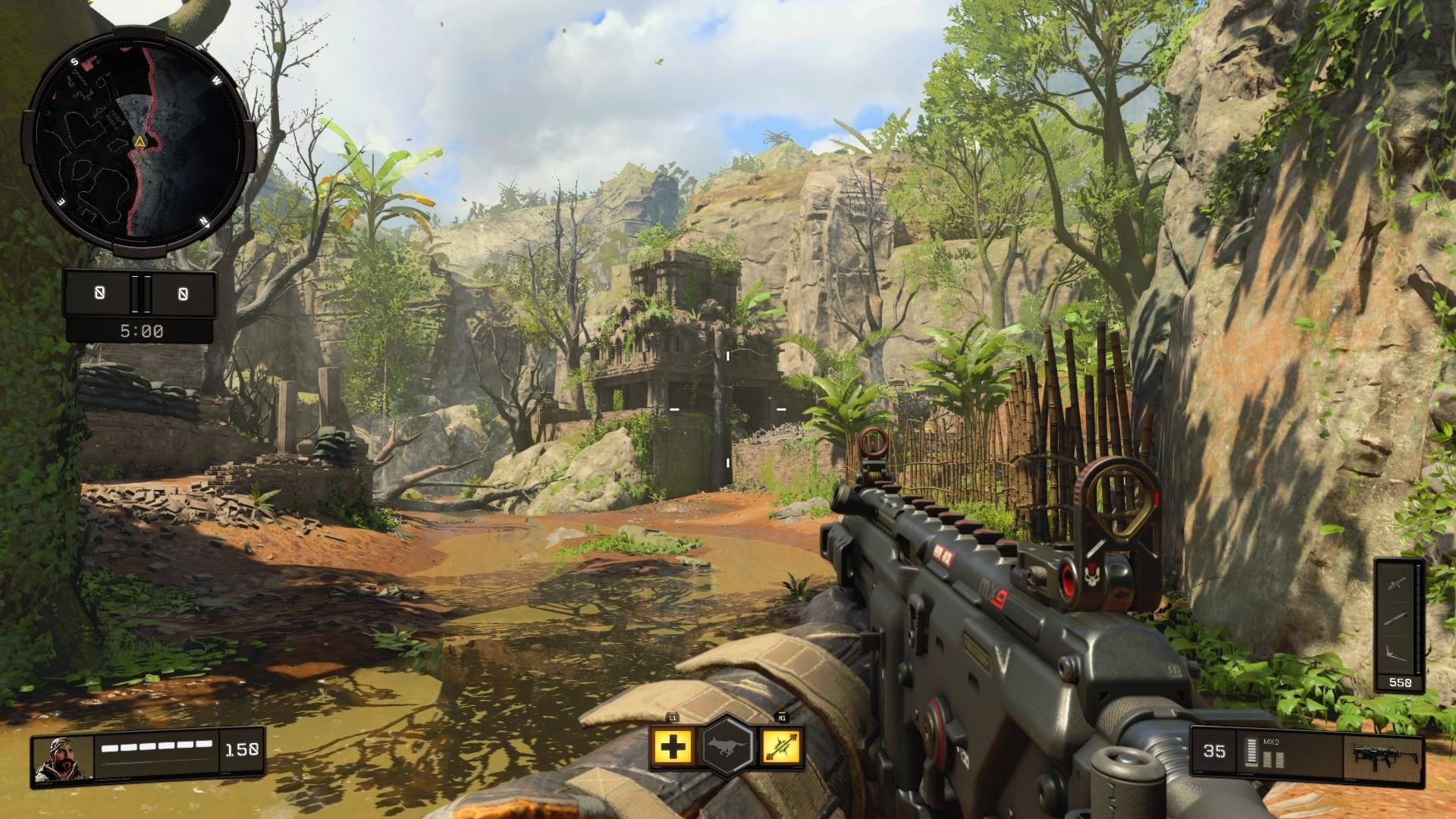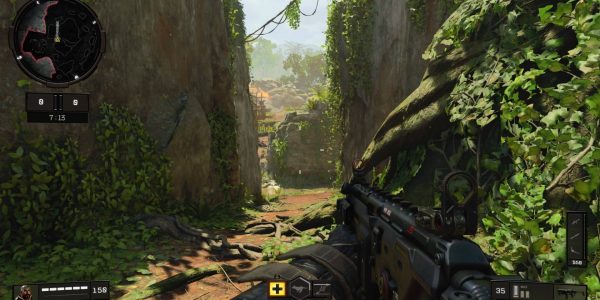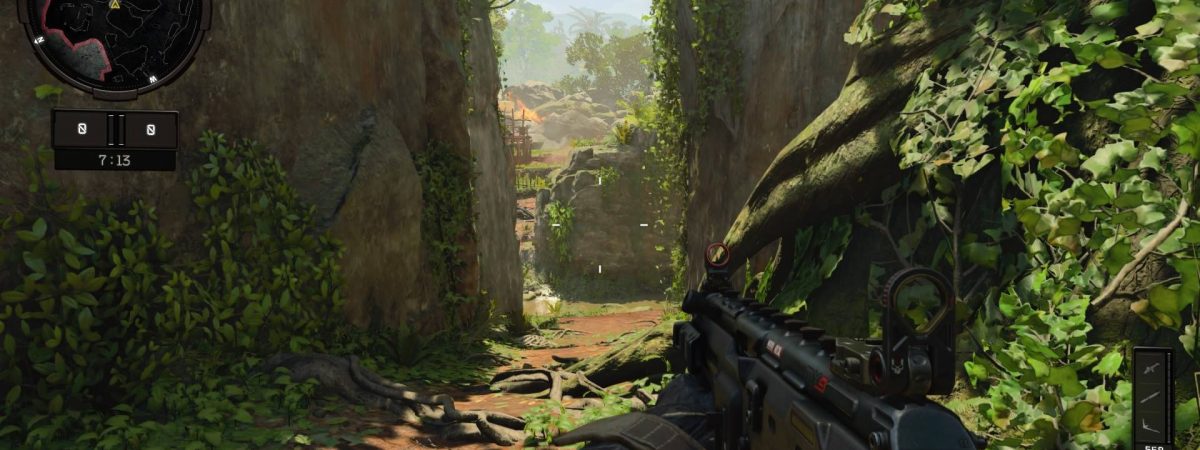To enter the “Jungle” in Call of Duty: Black Ops 4 is to be vulnerable at all times.
Newly lush and vibrant in its transition to current gen, this throwback map debuted in the original Black Ops. And, eight years later, “Jungle” is still thrilling.
This time around, though, the map boasts more detailed textures, brighter colors and impressive lighting. But, most importantly, the new version preserves the level design that made a trek into the “Jungle” feel perilous at all times. Let’s take an in-depth look at what it is about this map’s makeup that makes “Jungle” feel so dangerous.

How is Call of Duty: Black Ops 4 Map “Jungle” Structured?
As in many Call of Duty: Black Ops 4 maps, “Jungle” is composed of wide-open spaces connected by twisty corridors. Nothing new to see there. But, “Jungle” feels far more perilous than other maps in the game because the corridors are often just as vulnerable as the arenas. Additionally, the arenas are huge and often offer precious little cover. Many of these spaces are connected by rope bridges that can be attacked from all sides. This means that few areas are truly safe.
The map’s verticality also works to make you feel on edge. Those rope bridges may leave you vulnerable, but they also provide a vantage point for enemies to get a bead on you from above. And, getting to the second level to begin with can leave you in an open position; your character will climb slowly, and the wide-open areas provide long, clear lines of sight.
The map’s aesthetics contribute to that feeling of danger. One portion of “Jungle” is always burning. The wooden shacks that serve as cover feel easily destructible. No matter where you go in “Jungle,” someone is watching you.
That may be the key to this map’s enduring appeal.




